From the extract, we learn that Jean-Pierre Schmit was a 29-year-old farmer from Hillsboro, Oregon, who was staying in Hostert, and that his war bride was a 21-year-old woman named Marie Beving from the Commune of Troisvierges, who was living in Holleric
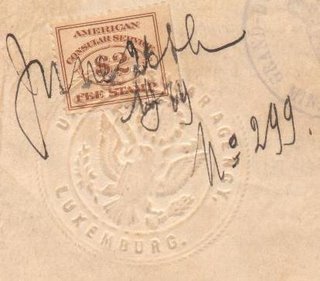 h.
h.Since December 1918, Jean-Pierre had been in Luxembourg as a solider with the World War I American Expeditionary Force (AEF) (a "soldat de l’armée américain"). This is not surprising since two divisions of the AEF under Gen. Pershing began entering Luxembourg on November 21, 1918, just ten days after Germany signed the armistice. Along with French troops under Marshall Foch, they remained there well into the next year, throughout a turbulent period during which Luxembourg's political future was decided.
While stationed in Luxembourg, the AEF soldiers (often referred to as "doughboys") gave concerts and put on shows for the public and participated in dances and other social events. Perhaps these provided the occasion for Jean-Pierre and Marie's romance! An account of the life of Paul B. Hendrickson, a typical AEF soldier in Luxembourg, can be found on the Internet at http://home.comcast.net/~paulb1917/ based on his diary entries and some 130 letters and postcards he sent back to the United States between December 1918 and April 1919. Typical is this diary entry on January 9, 1919, the day that a republican revolution had broken out in earnest in Luxembourg-Ville and on which G.D. Marie-Adélaïde announced she would abdicate:
Jan 9 Thur confined today all of company. Haney & chief were in Lux. and saw a great demonstration as today the princess gives up her throne. [Luxembourg is] to be either a republic or annexed to France. So princess and Grande Dutchess Adelaide is now a private person with 150 000 000 marks.
Attached to the extract is a certificate from the American Consular Agency in Luxembourg dated June 26, 1919, which recites:
I, Desire Derulle, American Consular Agent in Luxemburg, G.D. of Luxemburg, do hereby certify that the signature of Mr. NICKELS, Counsellor to the Grand Ducal Government, at the foot of the document hereto annexed is his true and genuine signature.
The United States consular stamp is tied to the certificate by a manuscript signature and the embossed seal of the U.S. Consular Agency in Luxemburg ties the certificate to the extract. According to an article in the Luxembourg News of America (August 1970), Desire Derulle (1876-1926) was a Luxembourger who served as the U.S. Consular Agent in Luxembourg from 1913 to his death in 1926. He was the nephew of Ernest Derulle (1851-1912), who preceded him as the U.S. Consular Agent.
The combined use of revenue stamps from Luxembourg and the United States on a single document provides us with an unusual two-country mixed franking, one which should give jaded postal historians a shot of philatelic viagra, stimulating them to venture into the exciting and unexplored world of fiscal philatelic history!
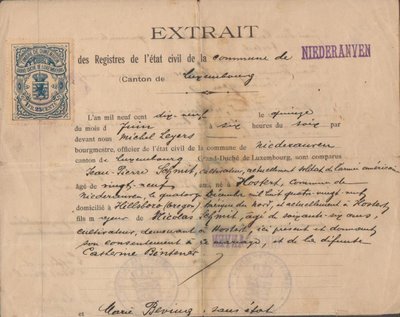
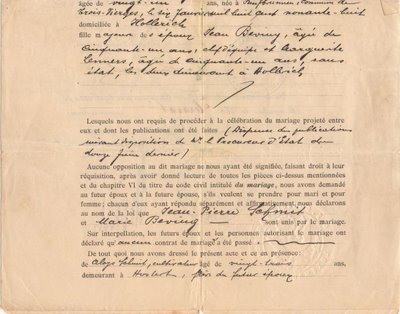
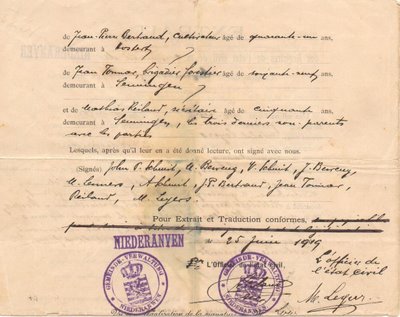

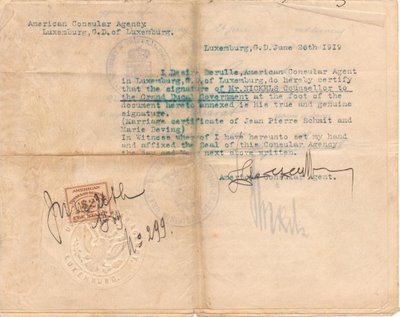
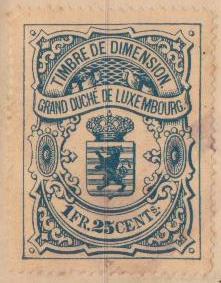
No comments:
Post a Comment